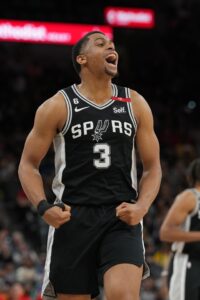The Magic have been the worst team in the NBA over the past decade, recording a 289-512 record in the last 10 seasons. They won fewer than 30 games in six of those campaigns, only finishing above .500 once (42-40), when they lost in the first round of the playoffs in 2018/19.
However, there are plenty of reasons for optimism going forward. For starters, Orlando exceeded external expectations in 2022/23, increasing its year-end win total from 22 to 34.
With two lottery picks in 2023 (sixth and 11th), an extra first-round pick via Denver in 2025, all of their own future firsts, and several extra seconds, the Magic have a nice haul of draft assets. They also have an impressive young core headlined by Rookie of the Year Paolo Banchero and standout sophomore Franz Wagner.
The Magic’s Offseason Plan:
If they really wanted to, the Magic could create nearly $60MM in cap room this summer if they choose not to guarantee any of their own salaries and renounce all of their free agents and cap holds (aside from the lottery picks). That’s highly unlikely though.
The far more realistic scenario is they’ll have somewhere in the range of $25-45MM in cap room, depending on what they do with Gary Harris and Jonathan Isaac. Harris’ $13MM contract for next season is fully non-guaranteed, while Isaac — who has played just 11 games over the past three seasons — has a $17.4MM cap hit, of which only $7.6MM is guaranteed.
 Markelle Fultz should be a lock to have his full $17MM salary for ‘23/24 guaranteed – he’s only owed $2MM as of now. The former first overall pick played a major role in the Magic turning their season around. After Orlando started 5-16 without him, Fultz appeared in 60 of the team’s 61 remaining games — the Magic had a 29-31 record in those 60 games, losing the lone contest he sat in April.
Markelle Fultz should be a lock to have his full $17MM salary for ‘23/24 guaranteed – he’s only owed $2MM as of now. The former first overall pick played a major role in the Magic turning their season around. After Orlando started 5-16 without him, Fultz appeared in 60 of the team’s 61 remaining games — the Magic had a 29-31 record in those 60 games, losing the lone contest he sat in April.
The young guard has been plagued by injuries throughout his six NBA seasons, only appearing in 191 total games. But he was productive when healthy in ‘22/23, averaging career highs in points (14.0), assists (5.7), rebounds (3.9), steals (1.5), and minutes per game (29.6), as well as field goal percentage (51.4%).
Fultz still struggles from long distance, converting just 31% of his three-pointers on low volume (1.5 attempts per game). However, he’s an explosive and crafty finisher around the rim, is quite accurate on mid-range jumpers (45.8%, which ranked in the 70th percentile, per DunksAndThrees.com), and is a solid defensive player.
There are three reasons why I’m discussing Fultz so extensively. One, if the Magic guarantee his salary, he’ll be eligible for an extension. Two, his outside shooting woes affect the rest of the team, because it’s the biggest roster weakness. Three, it has been floated that Orlando might pursue a veteran point guard with its cap space, with Fred VanVleet being rumored as a target.
Is VanVleet a better player than Fultz right now? Yes. He’s a far more willing – and better – outside shooter than Fultz, even if he’s coming off a highly erratic campaign that saw him post a career-low 34.2% from beyond the arc. He’s also four years older and looked a half step slower on defense in ‘22/23.
VanVleet is rumored to be seeking a contract similar to what Jrue Holiday received a couple years ago, which was $135MM over four years (incentives increased the value a bit). I like VanVleet, and he has outplayed his current contract. But I don’t think he’s worth double Fultz’s salary, particularly with Cole Anthony eligible for a rookie scale extension and Jalen Suggs still having two years left on his rookie contract.
If I were running the Magic, I would rather let those young guards and the rest of the roster continue to develop, and look to add younger wing talent and shooting via the draft and less expensive free agent targets.
Some potential free agent names of interest: Austin Reaves (restricted), Cameron Johnson (restricted), Gary Trent Jr. (player option), Donte DiVincenzo (player option) and Max Strus (unrestricted). Johnson shares positional overlap at forward with Banchero and Wagner, but I don’t think that’s a big deal – he’s great at playing off the ball and is one of the best shooters on the market (the Magic have also shown a willingness to experiment with position-less lineups).
Orlando’s only real rotation player who’s a free agent is Moritz Wagner, who had a solid season as the backup center. The Magic have his Bird rights, so they won’t have to earmark cap room or an exception to re-sign him, assuming they want him back.
Salary Cap Situation
Guaranteed Salary
- Wendell Carter Jr. ($13,050,000)
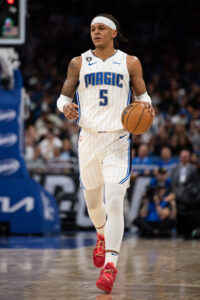 Paolo Banchero ($11,608,080)
Paolo Banchero ($11,608,080)- Jonathan Isaac ($7,600,000)
- Note: Partial guarantee. Rest of salary noted below.
- Jalen Suggs ($7,252,080)
- Cole Anthony ($5,539,771)
- Franz Wagner ($5,508,720)
- Chuma Okeke ($5,266,713)
- Markelle Fultz ($2,000,000)
- Note: Partial guarantee. Rest of salary noted below.
- Caleb Houstan ($2,000,000)
- Kevon Harris (two-way)
- Jay Scrubb (two-way)
- Total: $59,825,364
Dead/Retained Salary
- None
Player Options
- None
Team Options
- Michael Carter-Williams ($3,051,144): Bird rights
- Note: Carter-Williams’ salary would remain non-guaranteed even if his option is exercised.
- Note: Carter-Williams’ salary would remain non-guaranteed even if his option is exercised.
- Goga Bitadze ($2,066,585): Non-Bird rights
- Admiral Schofield ($1,997,238): Early Bird rights
- Total: $7,114,967
Non-Guaranteed Salary
- Markelle Fultz ($15,000,000)
- Note: Partial guarantee. Fultz’s salary would become fully guaranteed if he’s not waived on or before June 30.
- Gary Harris ($13,000,000)
- Note: Harris’ salary would become fully guaranteed if he’s not waived on or before June 30.
- Note: Harris’ salary would become fully guaranteed if he’s not waived on or before June 30.
- Jonathan Isaac ($9,800,000)
- Note: Partial guarantee.
- Note: Partial guarantee.
- Bol Bol ($2,200,000)
- Note: Bol’s salary would become fully guaranteed if he’s not waived on or before June 30.
- Total: $40,000,000
Restricted Free Agents
- None
Two-Way Free Agents
- None
Draft Picks
- No. 6 overall ($7,137,840)
- No. 11 overall ($4,952,160)
- No. 36 overall (no cap hold)
- Total: $12,090,000
Extension-Eligible Players
- Markelle Fultz (veteran)
- Jonathan Isaac (veteran)
- Cole Anthony (rookie scale)
- Chuma Okeke (rookie scale)
Note: These are players who are either already eligible for an extension or will become eligible before the 2023/24 season begins.
Unrestricted Free Agents / Other Cap Holds
- Moritz Wagner ($1,989,698 cap hold): Bird rights
- Arron Afflalo ($1,989,698 cap hold): Non-Bird rights
- Marreese Speights ($1,989,698 cap hold): Non-Bird rights
- Ignas Brazdeikis ($1,774,999 cap hold): Early Bird rights
- Vic Law ($1,774,999 cap hold): Non-Bird rights
- Sindarius Thornwell ($1,774,999 cap hold): Non-Bird rights
- Total: $11,294,091
Note: The cap holds for the players in italics remain on the Magic’s books from prior seasons because they haven’t been renounced. They can’t be used in a sign-and-trade deal.
Cap Exceptions Available
- Room exception: $7,609,000

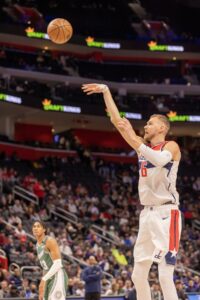 There were some positive developments —
There were some positive developments — 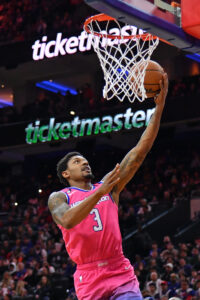

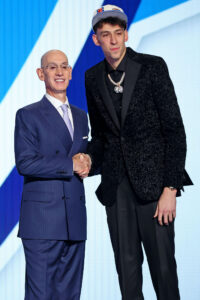
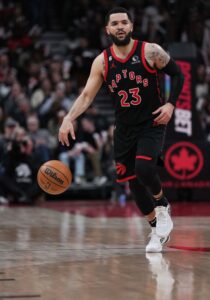 On paper, the Raptors looked like a team that should have finished better than .500.
On paper, the Raptors looked like a team that should have finished better than .500. 
 Indiana only has five free agents (including both two-way players) entering the offseason, and president of basketball operations Kevin Pritchard has already said that the team’s interest in bringing back
Indiana only has five free agents (including both two-way players) entering the offseason, and president of basketball operations Kevin Pritchard has already said that the team’s interest in bringing back 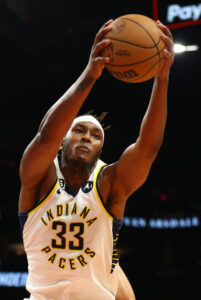
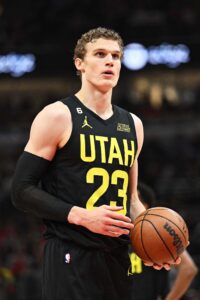 But it was
But it was 
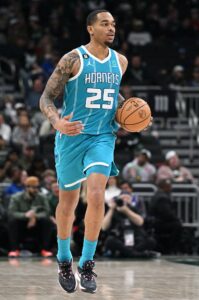 Unfortunately, the Hornets took a major step back this season from a win/loss perspective, going 27-55. Injuries to players up and down the roster certainly played a part in that decline, with only
Unfortunately, the Hornets took a major step back this season from a win/loss perspective, going 27-55. Injuries to players up and down the roster certainly played a part in that decline, with only 
 I don’t think the idea of trading Green should be entirely dismissed, but I’d be surprised if he’s moved. He’s still only 21 years old and has two years left on his rookie contract. Sure, he’s struggled with scoring efficiency and defense, but those are normal growing pains for a young player, and it’s not like the Rockets had a strong foundation on either end of the court.
I don’t think the idea of trading Green should be entirely dismissed, but I’d be surprised if he’s moved. He’s still only 21 years old and has two years left on his rookie contract. Sure, he’s struggled with scoring efficiency and defense, but those are normal growing pains for a young player, and it’s not like the Rockets had a strong foundation on either end of the court.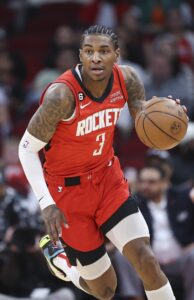
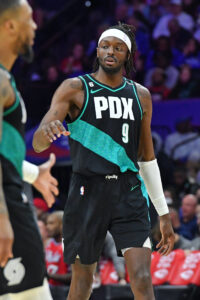 The trade package the Blazers gave up for Grant
The trade package the Blazers gave up for Grant 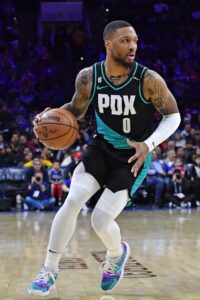
 Considering they finished 29th in offense and 30th in defense with the worst net rating in the league (a brutal minus-9.9), it’s safe to say the Spurs need help wherever they can find it. A star to build around would be a great place to start, but they’ll almost certainly have to hope that will come via the draft or through internal development.
Considering they finished 29th in offense and 30th in defense with the worst net rating in the league (a brutal minus-9.9), it’s safe to say the Spurs need help wherever they can find it. A star to build around would be a great place to start, but they’ll almost certainly have to hope that will come via the draft or through internal development.